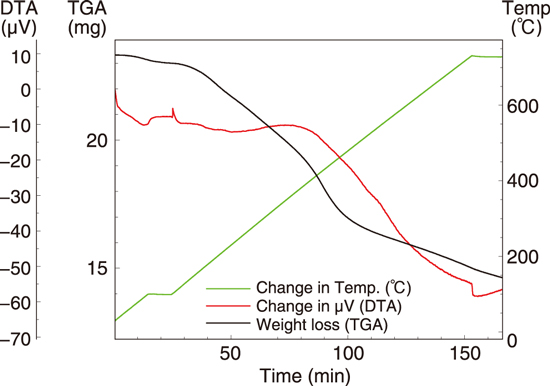
Fig.8-7 Results of the differential thermal analysis (DTA) for nuclear fuel material containing organic compounds

Fig.8-8 Change in the appearance of nuclear fuel material containing organic compounds subjected to heat treatment: (a) before heat treatment, (b) after heat treatment (200 ℃), and (c) after heat treatment (700 ℃)
The Nuclear Fuel Cycle Engineering Laboratories are progressing the decommissioning of nuclear facilities in a planned manner. Facility B is one of the facilities being decommissioned because it was constructed around more than 60 years ago. Therefore, the nuclear fuel materials are being transported to another facility for the decommissioning. The Chemical Processing Facility received the nuclear fuel material containing organic compounds that was stored in Facility B. However, the packing bag for the nuclear fuel material containing organic compounds swelled during storage. This swelling is attributed to any gases generated by the radiolysis of some components of the nuclear fuel material.
To prevent swelling of the packing bag because of the generation of gases, we studied the stabilization treatment of the nuclear fuel material without gas generation.
The properties of nuclear fuel material were investigated by gamma-ray spectrometry, inductively coupled plasma–atomic emission spectrometry, and mass spectrometry. These analyses indicated that the nuclear fuel material contained alpha radioactive nuclei, which were responsible for generating gases. We also found that a large amount of nitric acid solution was required when this nuclear fuel material dissolved. If this material is denitrated and converted after separating the radionuclides by solvent extraction as done in the common nuclear-fuel–reprocessing method, a large amount of nitric acid solution (50 L) and organic solvent (20 L) are required for this material (104.34 g). This method is not preferable as it produces a large amount of liquid and solvent wastes. Therefore, we explored heat treatment instead of solvent extraction. We conducted thermogravimetric and differential thermal analysis (TG-DTA) to confirm the safety of heat treatment. No exothermic peaks were observed under 750 ℃, as shown in Fig.8-7. Furthermore, a comparison of the DTA curves of the actual and simulated samples showed that the organic compounds in this nuclear fuel material were the ionic exchange resin. It is known that this resin completely decomposes under 750 ℃ and that heat treatment is one of the effective methods for disposing this fuel material.
Based on the above results, we conducted heat treatment for total amount of the nuclear fuel material. The temperature for heat treatment was gradually raised in steps: 200 ℃ (1 h)→400 ℃ (1 h)→700 ℃ (20 min). After heat treatment, the volume decreased drastically as shown as Fig.8-8, and the weight also decreased greatly from 104.34 g to 34.22 g. From these results, we can judge that these organic compounds were completely decomposed.
This nuclear fuel material was sealed in a packing bag and stored in a storage facility on October 19, 2020. We confirmed that no gas was generated via radiolysis from this nuclear fuel material by conducting monthly inspections to check the packing bag for any swelling May17, 2022.
In conclusion, this result is useful for the treatment of unknown nuclear fuel materials in various decommissioning nuclear facility, as a method to stabilize the nuclear fuel materials containing organic compounds to store them safely for a long time.
(Kohei Tada)